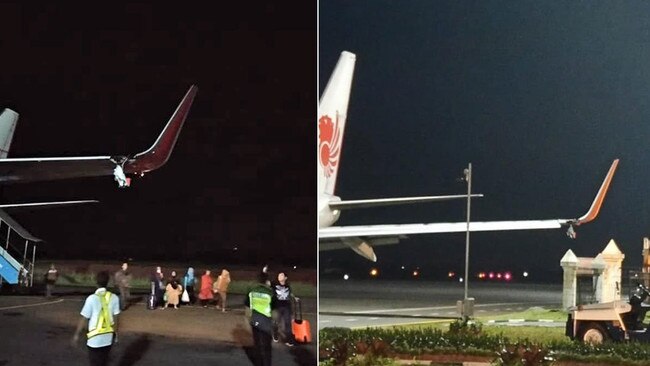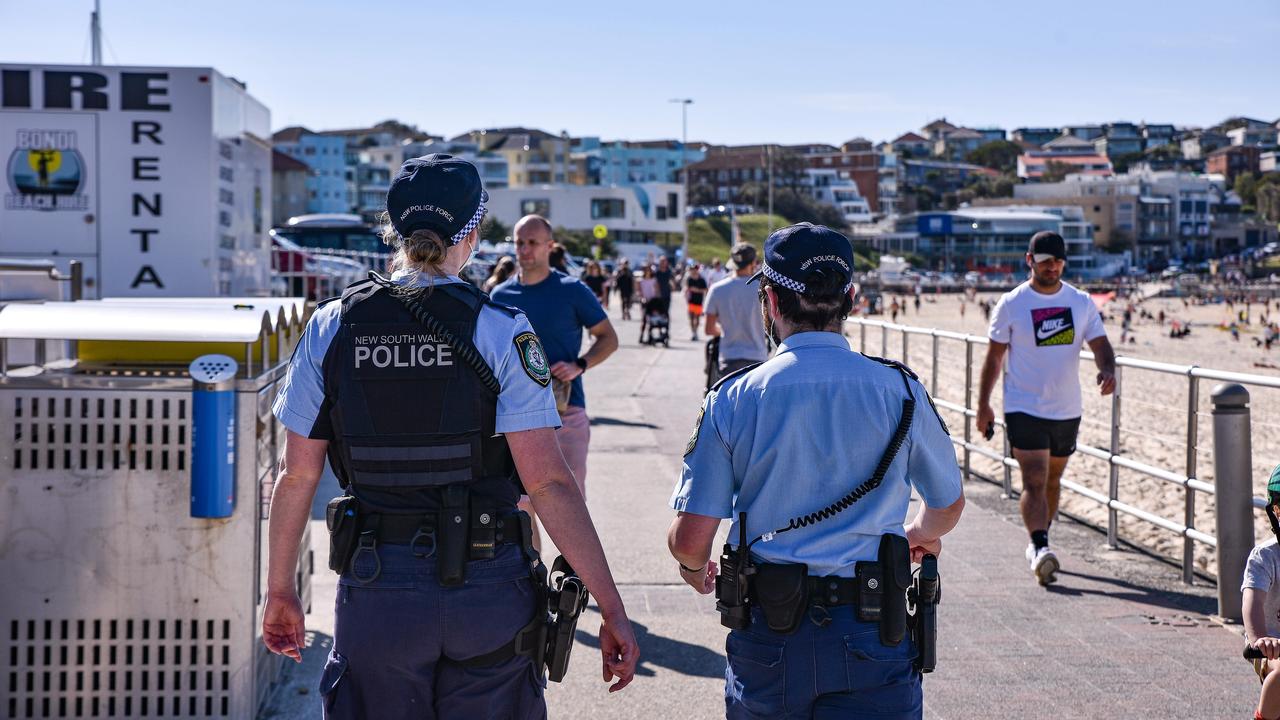Lion Air plane hits lamp post trying to takeoff
A Lion Air plane has crashed into a lamp post while trying to take off in Sumatra.

A Lion Air plane has crashed into a lamp post at an airport in southwest Sumatra as it taxied to the runway last night, just nine days after one of the discount air carrier’s new Boeing 737 Max 8 aircraft plunged into the Java Sea killing all 189 people on board.
Indonesia’s Transportation Ministry has said it will investigate the incident which happened around 6.30pm local time at Bengkulu’s Fatmawati Soekarno airport, even as a major search and rescue operation continues for victims of the October 29 flight JT610 and for the cockpit voice recorder.
“An investigation will be carried out by Aircraft Inspection and Airworthiness Inspector, Airport Inspector and Aviation Navigation Inspector to see the cause of the incident and the appropriate follow-up steps,” Acting Director General of Air Transportation M Pramintohadi Sukarno said late Wednesday.
The aircraft’s left wing was damaged in the accident and the Boeing 737-900 has been grounded, but no injuries were reported.
Lion Air plane wing breaks after airport runway collision https://t.co/sIqeJKztHB pic.twitter.com/Qp6PrYwUKY
— Mothership.sg (@MothershipSG) November 7, 2018
The Bengkulu to Jakarta flight, which was carrying 145 passengers, was delayed for several hours before passengers were transferred to a different plane and flown to the Indonesian capital.
Lion Air spokesman Danang Mandala Prihantaro said the accident happened as the plane was being guided by the aircraft movement controller on the tarmac, an airport employee who is now under investigation.
“Our pilot was simply following the guidance and instructions provided by the AMC officer,” he told The Australian.
“All movement from the parking stand to the runway is the responsibility of the AMC. We have even received an apology from the airport and the AMC officer.”
The latest incident involving Lion Air comes after US aircraft manufacturer Boeing issued a safety bulletin yesterday related to the problems with a crucial sensor in its new 737 Max fleet, which black box flight data has shown malfunctioned in the last four flights undertaken by the crashed aircraft.
Flight 610, a Boeing 737 Max 8 that entered service in August, experienced erroneous input from one of its angle of attack sensors before the plane carrying 189 people crashed into the sea off Jakarta, the Indonesian National Transportation Safety Committee revealed last night.
NTSC chief Soerjanto Tjahjono said airline maintenance crew had replaced the angle of attack in the aircraft two days before it plunged into the sea at speeds of 600km an hour, suspecting it to be the cause of the discrepancy in airspeed readings on the pilot’s side of the plane and the co-pilot.
However, the problem persisted in the flight from Bali to Jakarta immediately after repairs were completed, which should have prompted technicians in Jakarta to look for alternative sources for the problem.
“We don’t know what technicians did after they landed in Jakarta,” Mr Soerjanto said last night.
“What they should have done is realised that the Angle of Attack was not the culprit and looked for other suspects. We also don’t know whether the technicians properly replaced the AOA, but the act of replacing it seemed not to fix the unreliable airspeed reading and made the discrepancies worse,” he added.



